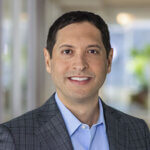Last month, I had a Q&A session with John Rotonti of The Motley Fool. I thought John’s questions gave an unusually good opportunity to explain how we at Oakmark approach investment decision making. What follows is an excerpt from that interview. The full interview is available here.
At Oakmark, we are long-term investors. We attempt to identify growing businesses that are managed to benefit their shareholders. We will purchase stock in those businesses only when priced substantially below our estimate of intrinsic value. After purchase, we patiently wait for the gap between stock price and intrinsic value to close.
John Rotonti: What’s your definition of a high-quality business?
Bill Nygren: Oakmark would consider a business to be high-quality if it had many of the following attributes:
- high return on incremental invested capital
- high free cash generation
- above-average growth opportunities
- competitive advantage not subject to replication
- low cyclicality
- low risk of obsolescence
I’m no doubt missing other important characteristics, but you get the idea. More importantly, however, is that there is a big difference between a high-quality business and a great stock, and that difference is stock price. Just as consumers do, we are always making trade-offs between price and quality.
John Rotonti: What’s your definition of a high-quality management team?
Bill Nygren: I think all investors would agree that a very important measure of a management team is its ability to maximize long-term returns for the business. It is rare that we disagree with the consensus on how well management runs the business. The issue we spend a great deal of time analyzing — that many other investors gloss over — is how a manager allocates capital.
If you buy a stock expecting to sell it after the next earnings release, capital allocation barely matters. But if you buy a stock expecting to hold it for five years, like we do, capital allocation becomes critically important. We define good capital allocators as always searching for the option that maximizes long-term risk-adjusted return. That means thinking like an owner, not a professional manager. A professional manager is almost always focused on making the company bigger — effectively focusing on the numerator. An owner pays just as much attention to the denominator, meaning maximizing per-share values.
John Rotonti: Do you think there’s one source of competitive advantage that’s stronger and more enduring than others?
Bill Nygren: As soon as it is obvious that a business is successful (meaning it earns a higher return than its cost of capital), other businesses begin trying to replicate that success. The most obvious enduring protection is a patent that can’t be bypassed (think pharmaceuticals), which gives relative certainty to monopoly status until expiration. Unfortunately, most investors recognize and are willing to pay for that advantage. Other competitive advantages we like are brand names, high switching costs, and scale. The longer I’ve been at this, the more respect I gain for corporate culture being a sustainable advantage. One would think that Liberty Media’s (NASDAQ: LMCA) singular focus on per-share value, 3G’s focus on cost reduction, or Goldman Sachs’s (NYSE: GS) focus on hiring the best and brightest ought to be easily copied, but it isn’t. I think that an advantaged corporate culture is the “moat” that is most often available for free.
John Rotonti: Now a few questions on valuation. In a previous conversation, you told me that your preferred method for estimating intrinsic value is to look at recent acquisition multiples for comparable businesses and that you use discounted cash flow analysis just as a sanity check. For businesses that don’t have comparable acquisition multiples (such as Apple (NASDAQ: AAPL), Google holding company Alphabet (NASDAQ: GOOG) (NASDAQ: GOOGL), or Amazon (NASDAQ: AMZN)), what’s your next preferred method?
Bill Nygren: Our preferred method is not encompassed by one summary statistic. We want to apply the statistic(s) that best captures each company’s unique value. We owned Amazon most of last year — an odd holding for a value manager given a P/E ratio of several hundred. The metric that gave us confidence that Amazon was cheaper than other retailers was enterprise value divided by sales. It seemed odd to us that Amazon, growing sales at 20%-plus annually, was priced at a smaller percentage of sales than were average brick-and-mortar stores. Other investors were focused on Amazon’s low margin; we believed forfeiting a year of earnings was a small price to pay to grow more than 2000 basis points faster than competitors.
In the case of Google, now Alphabet, we use a sum-of-the-parts approach explicitly valuing cash, cumulative investments in venture cap-like projects, and YouTube valued at a similar price-to-hours-watched ratio as other media companies. We then apply an appropriate multiple to search EBITA considering its low incremental capital needs, high market share, and strong industry tailwind.
John Rotonti: Are there ways of identifying what I’ll call non-GAAP compounders, and is this something you try to do? These are fast-growth companies that are investing heavily today so they may not be generating a GAAP profit. I think some metrics to focus on may be customer retention and market share.
Bill Nygren: Any time you can identify a measure of value that isn’t earnings-based, you have the potential to see value compounding where investors focused on reported earnings don’t see it. Examples we have profited from include using price-to-sales to identify value growth at Amazon, using price-to-subscriber to value cable TV or programming companies, price-to- EBITDA plus R&D for drug companies. All can be examples of businesses where growth capital is invested through the income statement rather than being capitalized.
John Rotonti: From what I can tell, you have tended to sell once a stock price approaches your estimate of fair value. Is this always the case, or are there some companies that you consider of such high quality that you would consider holding as long as the valuation does not balloon outside a zone of reasonableness?
Bill Nygren: When we purchase a stock at Oakmark, we set a sell target that is based on our best estimate of the value of that company. Our value estimate incorporates our belief about how the business quality compares to other businesses — higher-quality companies would benefit from higher multiples used to set sell targets. While we own a stock, the analyst’s job is to constantly refine and update our estimate of fundamental value, and thus the sell target. When that target is reached, unless we are delaying the sale to allow a gain to benefit from lower long-term capital gain tax rates, we sell.
Investing is always about opportunity cost — by definition, having your assets invested in a specific portfolio of stocks means you have no capital remaining for the stocks not in the portfolio. One of the all-time great investors, Charlie Munger, is constantly reminding us that some conclusions are easier to reach if we invert our thinking. So let’s assume we want to hold stocks of great businesses when they appear fully valued. The capital used to make room for holding those stocks means you no longer have as much capital to buy all the stocks you have identified as undervalued. You would effectively be saying that a fully valued stock is a superior investment to an undervalued stock. The only way that could be true is if you didn’t build in an appropriate multiple premium for a great business when setting your sell target. I think it is a very risky game for a value investor to become a momentum investor once a stock has reached its sell target.
John Rotonti: Do you meet with management?
Bill Nygren: Yes, we meet with almost every management we invest with.
When I joined Harris Associates (the advisor to the Oakmark Funds) in 1983, my boss asked me to go to a due diligence meeting for an IPO and report back. Upon returning, I told him the CEO was extremely impressive. He leaned back in his chair, took a big puff of his cigar, and then said, “I don’t want you giving your opinion on a CEO until you’ve seen 100 of them. Only then can you start to tell the top from the bottom decile. Of course they are impressive, how do you think they get to be CEOs?”
Though I didn’t appreciate his comment at the time, the more years that have passed, the more I see the wisdom in what he said. It is too easy to complete all your work on a company, then meet management and convince yourself they are exceptional. Rating managements effectively requires just as much rigor as does a valuation model.
We have specific goals of what we want to learn from management meetings. As long-term holders, our questions are never about next quarter or the outlook for the year. We are trying to learn how they think, what their long-term goals are, how they are incentivized, and how they will judge their own success or failure. It is a very different conversation than we would have if we were trying to refine our earnings estimate. Think about the questions you would ask someone you didn’t know personally who wanted you to become their business partner — that is the direction our conversations normally go.
Just like our valuation models aren’t always perfect, neither are our qualitative assessments of managements. But if you judge our success against a goal of being directionally right more often than not, I believe getting to know management teams has been very additive to our process.
John Rotonti: Do you have any performance metrics that you prefer management compensation be based on?
Bill Nygren: We have one objective when looking at management compensation: We want to believe that they will maximize their personal economics by maximizing the long-term return on the stock. For that reason, we prefer performance metrics that drive fundamental value and that they be measured on a per-share basis. It is easy to make a company bigger by diluting the shareholders. Every management team says they want to maximize shareholder value; the elite management teams maximize per-share value.
John Rotonti: When we experience a broad market sell-off (say 20% or 30% or more), what are you looking to buy first? Do you buy more of your core holdings? Do you look to purchase shares of businesses that may have been on your watch list but the valuation never made sense? Do you go first to the companies offering the largest margin of safety?
Bill Nygren: People who own the Oakmark Funds expect us to be reasonably fully invested most of the time. They are hiring us to find stocks that are better than the average stock, not to guess future stock market direction. In an ideal world, our investors would respond to a 20% correction by giving us more money to capitalize on the price decline. But unfortunately, very few investors behave that way. The result is that when the market corrects, we rarely have much new cash to invest. So our process is the same whether stocks are down 20% or up 20%. We want our assets invested in the stocks that have the best risk-adjusted expected returns. We are always looking for opportunities to sell stocks at or near our estimate of value and reinvest those funds in stocks selling well below our value estimate. Large market moves often create more pricing variations one stock to the next, so we tend to be more active after bigger market moves.
The holdings mentioned above comprise the following percentages of the Oakmark Fund’s total net assets as of 03/31/16: 3G Capital, Inc. 0%, Alphabet, Inc., Class A 0.9%, Alphabet, Inc., Class C 2.5%, Amazon.com, Inc. 0%, Apple, Inc. 2.3%, Fiat Chrysler Automobiles N.V. 1.3%, Fiat Chrysler Automobiles N.V. 7.785% Convertible Bond due 12/15/16, 0%, Ford Motor Co. 0%, General Motors Co. 1.5%, Goldman Sachs Group, Inc. 1.7%, Liberty Interactive Corp. QVC Group, Class A 1.9%, MasterCard, Inc., Class A 2.6%, Samsung Electronics Co., Ltd. 0%, Wal-Mart Stores, Inc. 0%.
The holdings mentioned above comprise the following percentages of the Oakmark Select Fund’s total net assets as of 03/31/16: 3G Capital, Inc. 0%, Alphabet, Inc., Class A 0%, Alphabet, Inc., Class C 8.4%, Amazon.com, Inc. 0%, Apple, Inc. 0%, Fiat Chrysler Automobiles N.V. 1.1%, Fiat Chrysler Automobiles N.V. Convertible Bond 7.785%, due 12/15/16, 3.0%, Ford Motor Co. 0%, General Motors Co. 0%, Goldman Sachs Group, Inc. 0%, Liberty Interactive Corp. QVC Group, Class A 4.4%, MasterCard, Inc., Class A 5.4%, Samsung Electronics Co., Ltd. 0%, Wal-Mart Stores, Inc. 0%.
The holdings mentioned above comprise the following percentages of the Oakmark Global Select Fund’s total net assets as of 03/31/16: 3G Capital, Inc. 0%, Alphabet, Inc., Class A 0%, Alphabet, Inc., Class C 8.0%, Amazon.com, Inc. 0%, Apple, Inc. 0%, Fiat Chrysler Automobiles N.V. 0%, Fiat Chrysler Automobiles N.V. Convertible Bond 7.785%, due 12/15/16, 0%, Ford Motor Co. 0%, General Motors Co. 0%, Goldman Sachs Group, Inc. 0%, Liberty Interactive Corp. QVC Group, Class A 0%, MasterCard, Inc., Class A 4.9%, Samsung Electronics Co., Ltd. 5.2%, Wal-Mart Stores, Inc. 0%.
Click here to access the full list of holdings for the Oakmark Fund as of the most recent quarter-end.
Click here to access the full list of holdings for the Oakmark Select Fund as of the most recent quarter-end.
Click here to access the full list of holdings for the Oakmark Global Select Fund as of the most recent quarter-end.
Portfolio holdings are subject to change without notice and are not intended as recommendations of individual stocks.
According to Morningstar, the Morningstar Manager of the Year award is presented to portfolio managers based on the managers’ (i) “ability to generate exceptional returns;” (ii) “willingness to align their interests with shareholders;” and (iii) “courage to stay with their strategies in order to produce superior risk-adjusted returns in the end.”
EBITDA refers to Earnings Before the deduction of payments for Interest, Taxes, Depreciation and Amortization which is a measure of operating income.
The Price-Earnings Ratio (“P/E”) is the most common measure of the expensiveness of a stock.
The Price-Sales Ratio (“P/S”) is calculated by dividing the company’s market cap by the revenue in the most recent year; or, equivalently, divide the per-share stock price by the per-share revenue.
The Oakmark Fund’s portfolio tends to be invested in a relatively small number of stocks. As a result, the appreciation or depreciation of any one security held by the Fund will have a greater impact on the Fund’s net asset value than it would if the Fund invested in a larger number of securities. Although that strategy has the potential to generate attractive returns over time, it also increases the Fund’s volatility.
Oakmark Select Fund: The stocks of medium-sized companies tend to be more volatile than those of large companies and have underperformed the stocks of small and large companies during some periods.
Because the Oakmark Select Fund & Oakmark Global Select Funds are non-diversified, the performance of each holding will have a greater impact on the Funds’ total return, and may make the Funds’ returns more volatile than a more diversified fund.
Investing in foreign securities presents risks that in some ways may be greater than U.S. investments. Those risks include: currency fluctuation; different regulation, accounting standards, trading practices and levels of available information; generally higher transaction costs; and political risks.
The discussion of the Funds’ investments and investment strategy (including current investment themes, the portfolio managers’ research and investment process, and portfolio characteristics) represents the Funds’ investments and the views of the portfolio managers and Harris Associates L.P., the Funds’ investment adviser, at the time of this letter, and are subject to change without notice.








